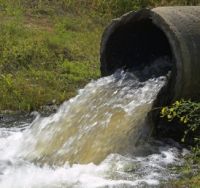

The Department for Environment, Food and Rural Affairs (DEFRA) is seeking views on the Government's plan to reduce sewage discharges and remove harm from storm overflows.
The Consultation applies to England only.
Background
Tackling storm overflows in England is a Government priority. It is an issue which has received significant public attention and the Government is firmly committed to a step change on action to protect public health and the environment from storm overflow discharges. It intends to produce a Storm Overflow Discharge Reduction Plan by September 2022, as required by the Environment Act 2021, to outline its vision.
This will set clear and enforceable targets that the water industry must meet. The Consultation seeks views on the targets and other core elements of the Plan in advance of its publication.
Scope
A lot of the sewage system piping was designed and built over 100 years ago, where a combined system would take away both sewage and rainwater in one pipe. Modern sewage systems installed after 1960 contain two pipes that collect sewage and rainwater separately. It is estimated that there are around 100,000 kilometres of combined sewers in England alone.
Storm overflows are safety valves that are built into the combined sewer system to discharge excess sewage to rivers, lakes or the sea, or when rainfall exceeds capacity. This protects properties from flooding and prevents sewage from backing up into streets or homes during heavy storm events.
A growing population, an increase in hard surfaces, and more frequent and heavier rainfall due to climate change have increased pressure on the sewage system, bringing the frequency of discharges to an unacceptable level. In 2020, with 80% of storm overflows being monitored, there were over 400,000 sewage discharges, totalling over 3 million hours.
Targets
The Consultation sets out targets that will apply to water companies to reduce or eliminate storm discharges from storm overflows. The responses to the Consultation will help shape the targets that water companies must achieve to significantly reduce their reliance on storm overflows, which will form part of the Storm Overflow Discharge Reduction Plan.
The targets are as follows:
Responding to the Consultation
The Consultation is open for responses from 31 March 2022 until 12 May 2022.
The way to respond is by completing an online survey.